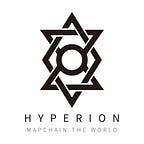Hyperion Weekly Quiz Report — Economic Model 2.1
Dear Community,
Welcome to the 2nd round of quiz report of Hyperion ecosystem. This week, we’ll explain the most popular issues/discussions raised in our global community on the Economic Model 2.0, including why we upgraded the model to 2.0, the major difference between 1.0 and 2.0 version, and what exactly is burning mechanism & scaling cycle, etc. In addition, we’ve have been interacting with our communities via weekly AMA sessions to keep updating and clarifying key points along with ecosystem development till the Mainnet launch. Please stay tuned for more quiz session on our twitter.
Let’s begin the session!
What exactly is HYN Economic Model 2.0 in a layman’s term and how can this benefit the public?
HYN Economic Model 2.0 defines how our consensus mechanism PoH safeguards the transition of our ecosystem overtime. The PoH consensus mechanism is a high-level organic combination of PoW and PoS for different layers of our decentralized network.
The economic model 2.0 also includes the design of the Map3 scaling cycles (having more nodes and better service) and how the Map3 scaling will drive the growth of our decentralized network as a whole. It also includes the details of our incentive structures on the PoW and the PoS layer, respectively. And that’s where the community can join and host Map3 or Atlas nodes for token injective. Participation is open to anyone.
Why did Hyperion upgrade to Economic Model 2.0? What new things are you adding and what old things are you removing?
The most important change is to install a self-reinforcing growth model. A self-reinforcing growth is the definitive mechanism for the exponential growth of internet products in the last two decades. Facebook, Amazon, Google are all drawing immense power from the self-reinforcing growth (i.e. users increase the value of the network, which in turns attract more users). It extends and improves the model 1.0 with a thoughtful design of the self-reinforcing mechanism hoping to drive a spiral network growth.
Hyperion ecosystem provides a long-term, stable and high quality of map service with the assistance of a self-reinforcing governance model without trust. At an early stage of ecosystem, we stimulate the continuous growth of service nodes and network security with economic incentives. As the sheer amount of services gets stabilized, business users will adopt Map3 services to reinforce the service rewards and grow data value within the ecosystem.
As different from the centralized entities, which seize profits from the lowered costs, soaring price and even user data, blockchain governance makes sure that service providers, users and the ecosystem share similar interests, while keeping the governance decentralized.
Who are the targeted new users to host Map3 and Atlas for the HYN Economic Model 2.0 as compared to the previous model?
It is still a decentralized community with an open-participation model. Anyone can participate in it and earn their tokens. The newly released Map3 PoW incentive distribution mechanism gives a clear guideline on how should our community operate its nodes. The model gives some extra favors to those who could attract more services usages — for example, big location-based application developers who are already consuming a massive amount of map services every day. They could direct the map usage traffic on their platform to the Map3 network and that may help them win over the competition and get more rewards!
How does HYN Economic Model 2.0 differ from HYN Economic Model 1.0? (What is the most prominent change in the new Economic Model and how would this better the model?)
Economic Model 2.0 applies a more aggressive token burning model and details how the activities of the network will affect the burning. The token burning model will deflate the token and changes the supply-demand dynamics. The more active the network is, the faster tokens will be burnt and the higher value for each. Communities hosting nodes and using map services will both speed up burning. Early stage will mainly adopt internal-burn, while it gradually changes to external-burn as the ecosystem grows, which will transit to market-oriented pricing and rewarding mechanism as it matures.
The model also details the PoW incentive distribution mechanism. It is a pretty cool mechanism to incentivize healthy competition among nodes to do more, so as to get more. It provides an adaptive way to verifiably and fairly determine how many tokens should Map3 nodes earn in each settlement cycle.
What is Map3 & Atlas scaling?
The scaling mechanism doubles Map3 nodes in each cycle, by decreasing required staking in each node into almost half, whereby encouraging node initiators to deploy a new Map3 node with the remaining staking for extra rewards. The increasing number of Map3 nodes restaked into Atlas nodes therefore stimulates the competition for 88 validation nodes, with an expansion of total staking amount on Atlas layer.
However, higher-staking only ensures a higher probability to enter the validation committee, while keeping the same validation rewards as others. Thus, the network encourages users to deploy more nodes rather than stake all in a single node with no extra rewards.
